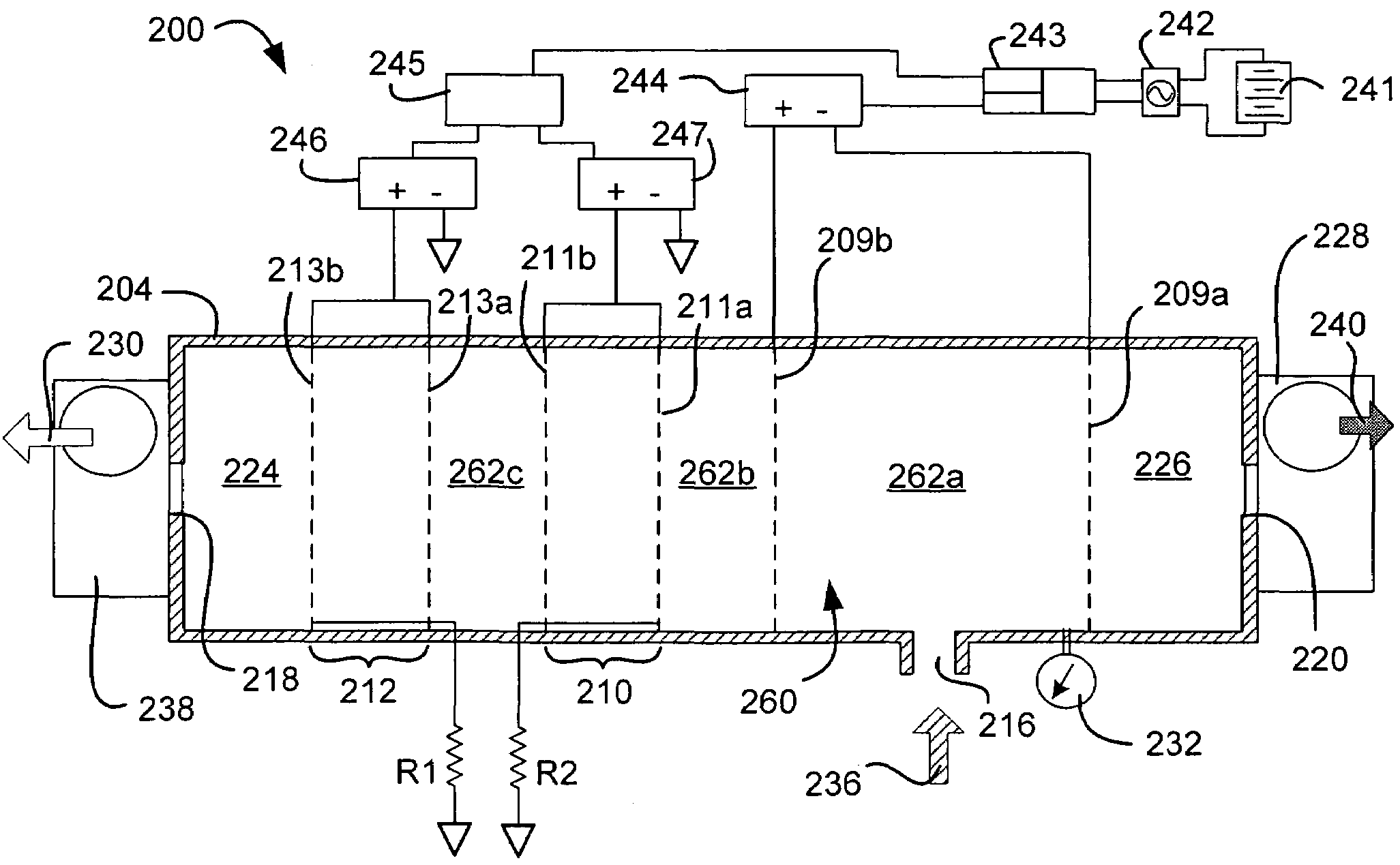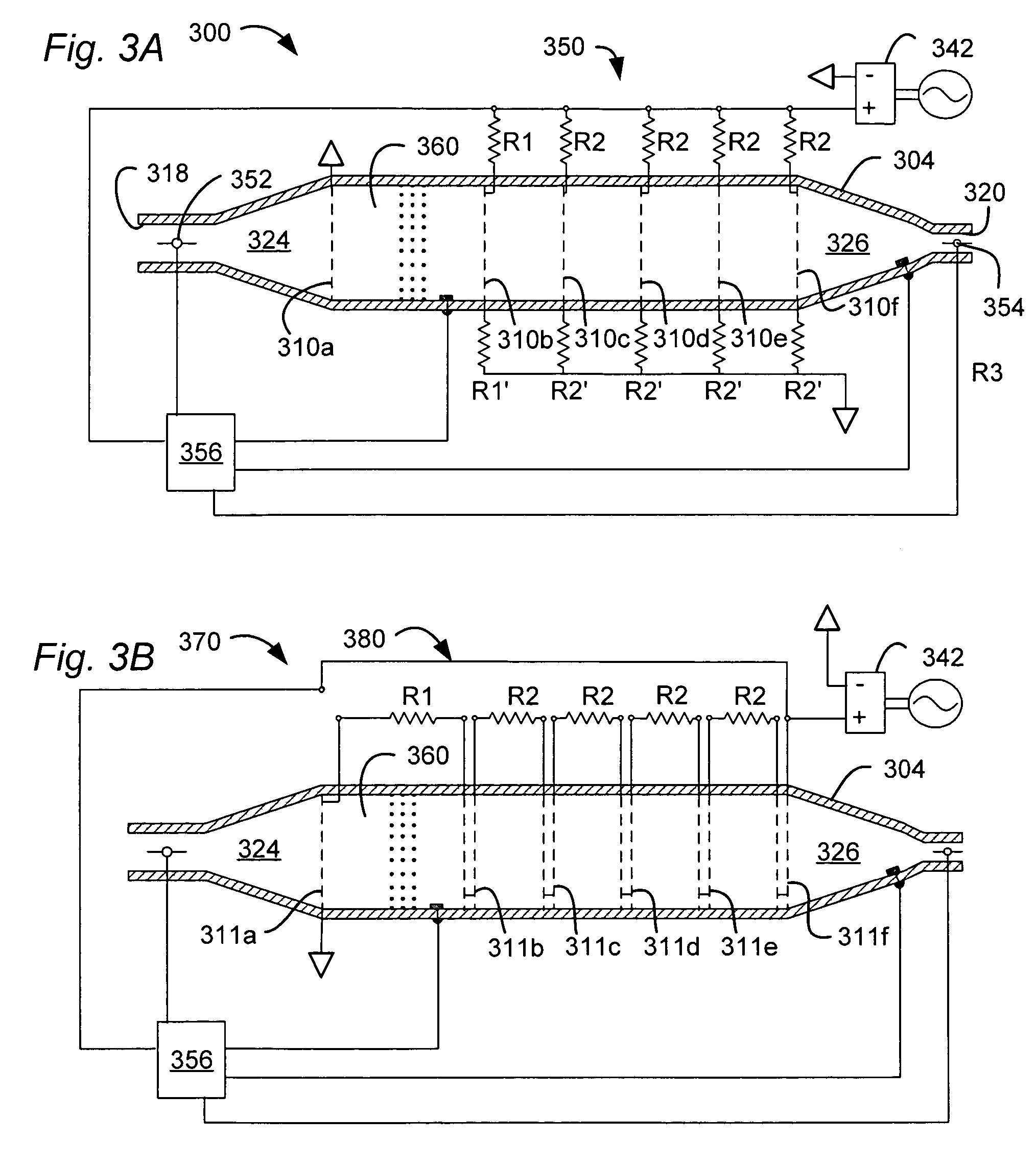Gas separator for providing an oxygen-enriched stream
a gas separator and stream technology, applied in the field of gas separators, can solve the problems of large equipment, large energy consumption, and inability to meet the requirements of continuous operation, and achieve the effect of improving the separation of oxygen
- Summary
- Abstract
- Description
- Claims
- Application Information
AI Technical Summary
Benefits of technology
Problems solved by technology
Method used
Image
Examples
Embodiment Construction
[0038]The present invention provides a method and system for separation of oxygen from air using a low-pressure, asymmetric separator apparatus. FIG. 1 shows exemplary steps of a method 100 for providing an oxygen-enriched stream from air. Method 100 may be performed using any of the systems disclosed herein, or any other suitable equipment. Steps 102, 104, 106, 108, and 116 are performed continuously and concurrently as a continuous method. Steps 112, 114, and 118 are optional, and apply to application of a separator according to the invention in an intake system for an internal combustion engine.
[0039]At step 102, air is introduced through an entry port into an enclosed ionization chamber. The pressure of the introduced air may be reduced and regulated by a throttle valve in-line with the entry port. In the alternative, the entry port has a fixed flow capacity. An entry plenum may be used to introduce the inlet air under laminar (or less turbulent) flow conditions. The ionization ...
PUM
 Login to View More
Login to View More Abstract
Description
Claims
Application Information
 Login to View More
Login to View More - R&D
- Intellectual Property
- Life Sciences
- Materials
- Tech Scout
- Unparalleled Data Quality
- Higher Quality Content
- 60% Fewer Hallucinations
Browse by: Latest US Patents, China's latest patents, Technical Efficacy Thesaurus, Application Domain, Technology Topic, Popular Technical Reports.
© 2025 PatSnap. All rights reserved.Legal|Privacy policy|Modern Slavery Act Transparency Statement|Sitemap|About US| Contact US: help@patsnap.com



